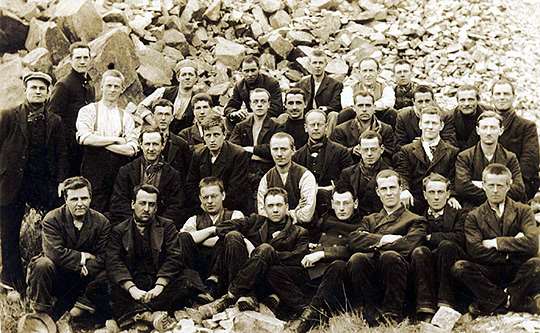2022-02-10 Conscientious Objectors in WWI
Speaker Brian Joyce
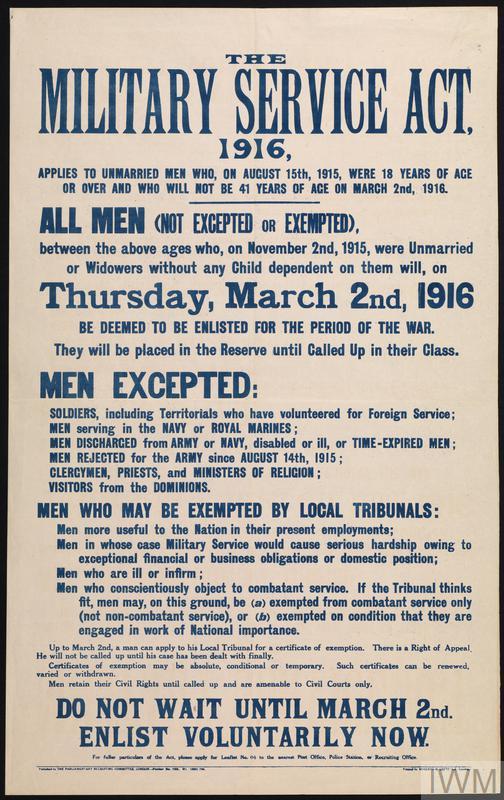
copyright The Imperial War Museum.
On Thursday the 10th of February, 2022, our members heard a well illustrated talk about the minority class of people “Conscientious Objectors”
during the First World War [WWI].
This class emerged from people with religious objections (Quakers), ethical objections, and political objections. While the religious objections
were understood, the political objections were not understood by the general populace (International Socialism).
Mr Joyce outlined the position at the start of the war and the movement from volunteer forces to conscripted forces in 1916 with the position of
Conscientious Objectors (COs) recognised, while their position was extremely socially awkward and many were discriminated against both
during the war and after the war. The ability to get a job after the war was very difficult for COs.
There had been an anti-war movement, or pacifist movement and societies and groups long before WWI and during the war their activities
were much enlarged and politicised, while opprobrium was created against them in the press, and by individual acts.
British Professional Army
When World War I started in 1914, Britain had a small professional army and reservists.
Britain did not have conscription. Most continental countries allowed and had conscription as part of their normal military set up.
At outbreak of war:
Germany army size 4,500,000
UK army size BEF in UK 100,000 (available for European Service)
Remainder of about 150,00 were on service overseas and unable to be recalled, as normal duty tour was 3 years abroad
and 3 years at home in Great Britain.
The British Expeditionary Force [BEF] sent to France was made up of approximately 50% professional soldiers and 50% reservists.
This BEF was a small part of the professional army as most were on service in India and elsewhere, while a Europe ‘continental war’
was a small part of military thinking and planning prior to the war.
Following the non-conscription method a call was made for volunteers to join the army.
Many joined from August 1914 under patriotism, peer pressure, possible adventure as ‘the war will be over by Christmas’, and
active recruitment campaigns.
Early Volunteers.
Rough increase in volunteers by week in first weeks after war declared:
Week one 8,000
Week two 43,000
Week three 63,000
Week four 175,000
These recruits had to be trained from scratch, possibly 6 weeks to 6 months to be ‘trained soldiers’.
The volunteers gradually increased to about half a million by end of 1914.
Pacifists.
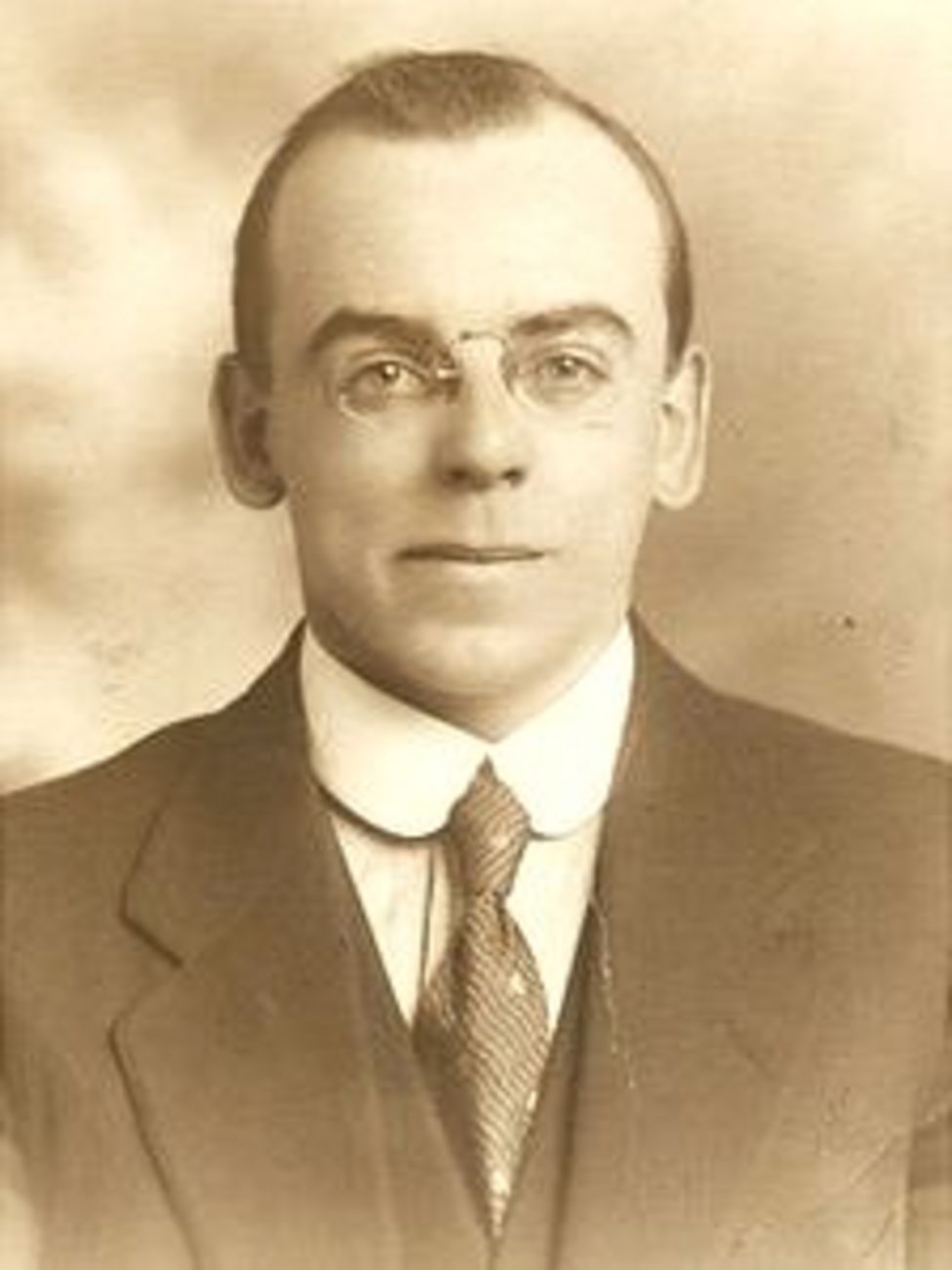
Image ex bbc Bernard Lawson was willing to work with the FAU and helping the wounded 74927215 lawson
Friends Ambuance Unit [ "FAU" ]
A number of societies and pressures were publicly done to ‘avoid war’ recruiting and show a pacifist outlook.
While Sir John French lead the BEF in France, his relative Charlotte (nee French) Despard was an anti war campaigner from before the Boer War.
So the seeds of the conscientious objectors movement was growing before and from the start of the war.
The losses during 1915 of men in the war slowed the active volunteers even with considerable peer pressure and adverts and recruitment activity,,
so ultimately Britain changed from a volunteer army basis to a conscription basis.
Conscription during the First World War began when the British government passed the Military Service Act in January 1916. [Image above of poster]
The act specified that single men aged 18 to 40 years old were liable to be called up for military service unless they were widowed with children,
or were ministers of a religion.
There was a system of tribunals to adjudicate upon claims for exemption upon the grounds of performing civilian work of national importance,
domestic hardship, health, and conscientious objection.
The law went through several changes before the war ended. Married men were exempt in the original Act, although this was changed in May 1916.
The age limit was also eventually raised to 51 years old. Recognition of work of national importance also diminished.
In the last year of the war there was support for the conscription of clergy, though this was not enacted. Conscription lasted until mid-1919.
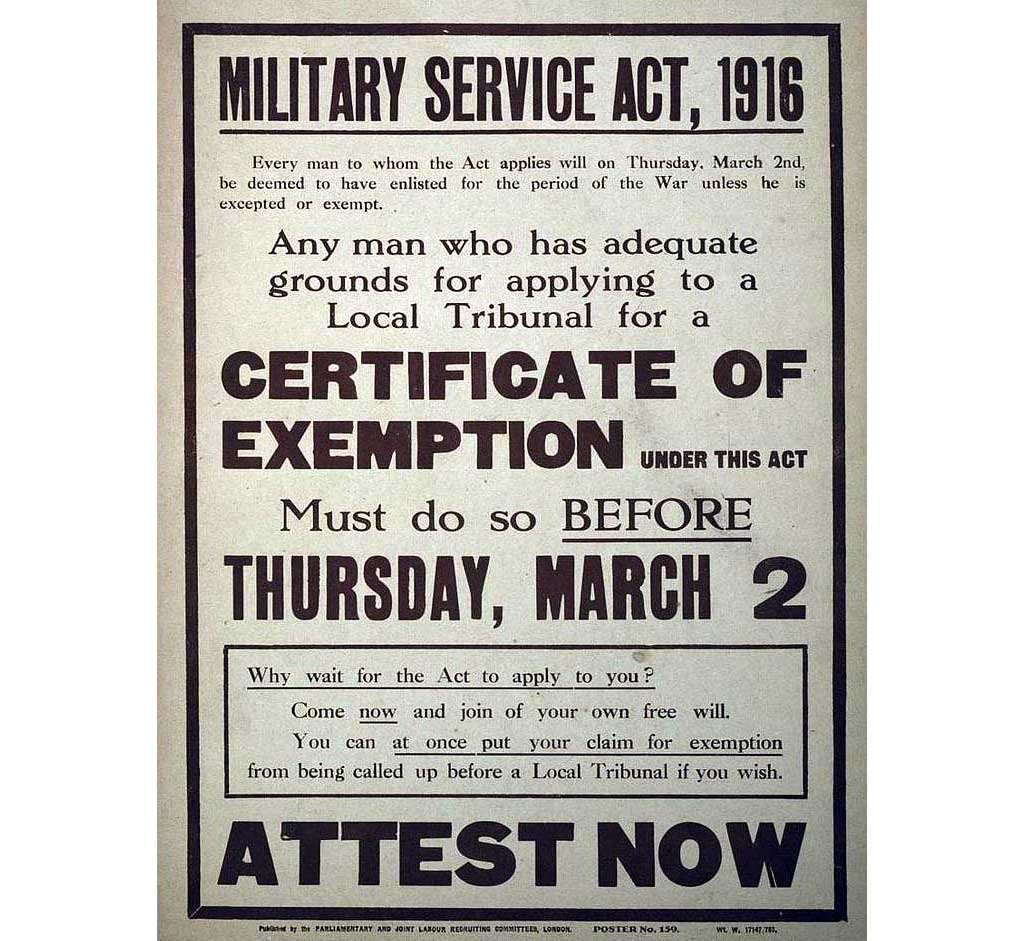
Photo: of poster about local tribunals.
Image of Image of Military SERVICE ACT notice
THE MILITARY SERVICE ACT, 1916 Parliamentary Recruiting Committee Poster No.153.
This poster explains the ways men could be exempted from combatant service, including conscientious objection. © IWM (Art.IWM PST 5161)
Tribunals.
The speaker illustrated the three levels of tribunal which could award an exemption from military service.
Local tribunals at local government level,
County Appeal Tribunals,
and national level Central Tribunal at Westminster.
Military Service Tribunals were bodies formed by borough, urban district and rural district councils to hear applications for exemption from conscription into the
British Army during the First World War. Although not strictly recruiting bodies, they played an important part in the process of conscription.
Tribunals were published as part of the Derby Scheme in 1915, but were continued on a statutory basis by the Military Service Act 1916, which brought in conscription.
The image below shows a screenshot of a 'temporary exemtion' granted undee thel Leigh tribunal, in Wigan Archives.
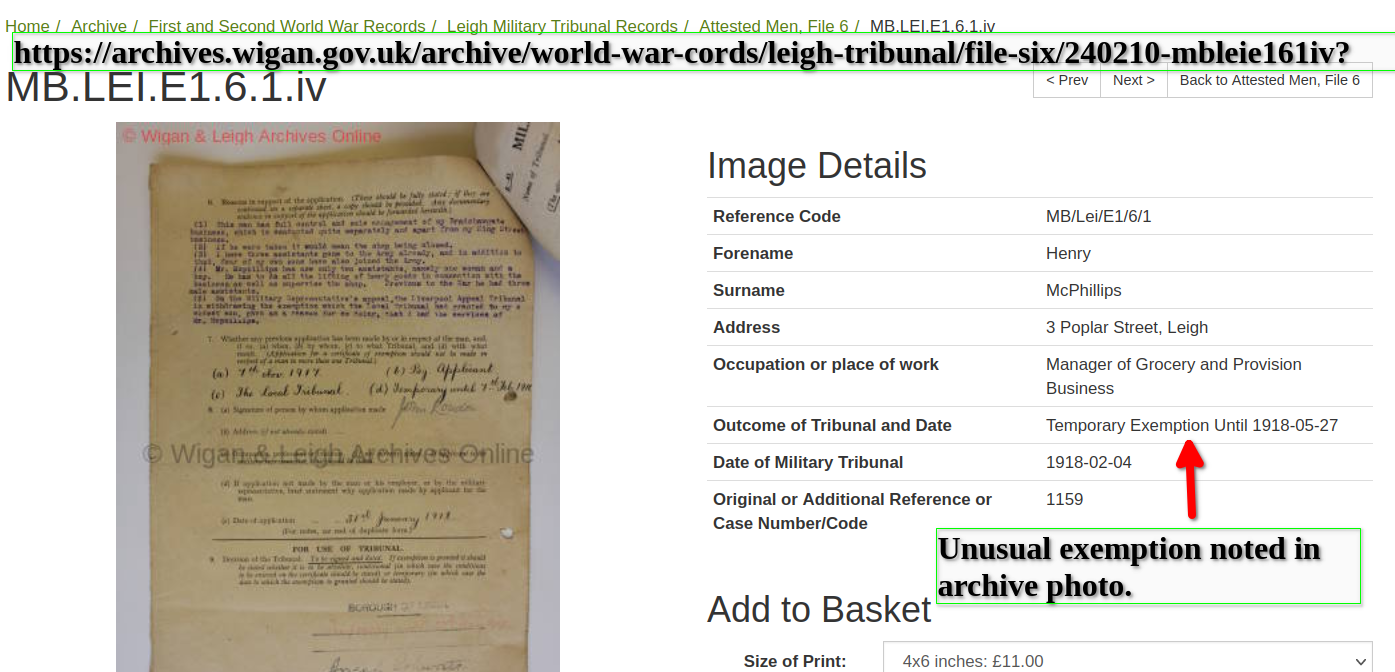
Screenshot: Exemtion for a period from Leigh archives at Wingan archives. An exemption result was 'unusual'.
Leigh Records.
By chance the records of the Leigh tribunal were not destroyed when destruction of tribunal records were instigated at the end of hostilities;
when the Government issued an instruction to destroy Tribunal records, only retaining two official sets for possible future use.
Luckily, many records do survive at local level, having been saved or they avoided
the official destruction order through neglect, good judgement or, in some cases, luck, as at Leigh.
Link to Wigan archives.
Leigh Records. Tribunals for Exemption from war service
At war’s end the local tribunals were ordered to destroy all records, most did so, however Leigh put their records in a basement and
thus forgotten; until they were found many years later and sorted and arranged by the Wigan Archivist and Archives department
The flies are available on Wigan Archives website.
https://archives.wigan.gov.uk/archive/world-war-records/leigh-tribunal?
Extract from website
Military Tribunals: Records of Voluntarily Attested Men, Leigh, 1915-1917
These records were created by the Military Tribunal system, which under the Military Service Act, 1916, established the terms for compulsory military enrolment.
The new Military Service Act required all adult males, aged 18-41, to register for military service unless they possessed a certificate of exemption.
By April 1918, the age range was extended, so that men aged from 17 to 55 could be called up, and exemptions were further restricted.
From 1916, men seeking exemption from military service could apply to various tribunals: Local Tribunals, Appeal Tribunals and a Central Tribunal based in London.
Local Tribunals were appointed by the Local Registration Authorities designated under the National Registration Act 1915.
They dealt with attested (voluntary servicemen) and non-attested (conscripted) applications. Recruiting officers or other military representatives were also
entitled to attend any hearing and to question applicants.
The reasons provided by applicants for exemption are varied, with applications made on moral grounds (conscientious objectors),
on medical grounds (disability), on family grounds (looking after dependents) and on economic grounds (preserving a business).
The vast majority of cases relate to the impact of war on a man’s family or their business interests, and the papers reveal some fascinating and tragic stories.
Due to the sensitive issues that surrounded compulsory military service during and after the First World War, nationally, only a small minority of the tribunal papers survive.
In the years that followed the end of the war, the Government issued instructions to the Local Government Boards that all tribunal material should be destroyed,
except for the Middlesex Appeal records and a similar set for Lothian and Peebles in Scotland, which were to be retained as a benchmark for possible future use.
This information was taken from the websites of The National Archives and The National Archives of Scotland,
Where further information can be found:
http://www.nationalarchives.gov.uk/conscription-appeals/
http://www.nas.gov.uk/about/081103.asp
Graffitti
The Richmond Castle Graffiti
Within the imposing Norman walls of Richmond Castle, an unassuming 19th-century military cell block holds a fascinating secret. Inscribed on its fragile walls are thousands of pieces of graffiti that span several decades and two world wars. New research is now shedding light on the artists behind the graffiti, including the conscientious objectors known as the Richmond Sixteen.
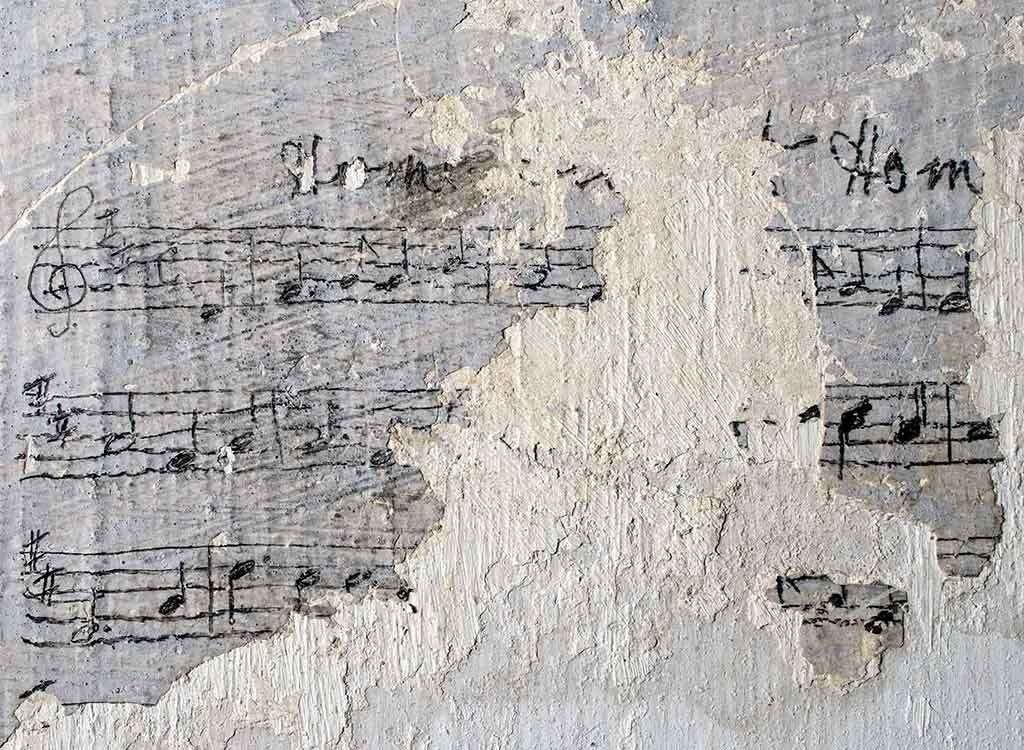
English Heritage project richmond cell block project
Adverse publicity against COs.
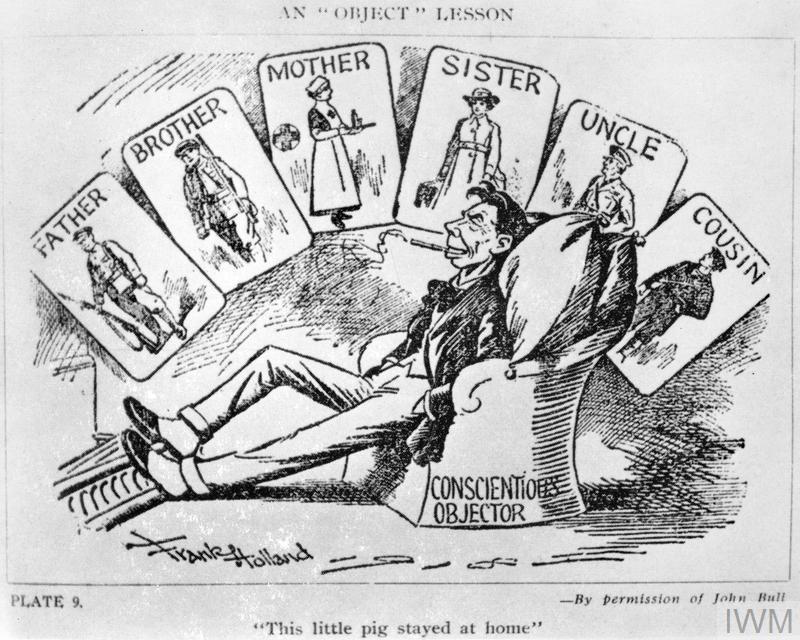
iwm image c cartoon of stay at homes 13JPG [ImperialWar Museum copyright]
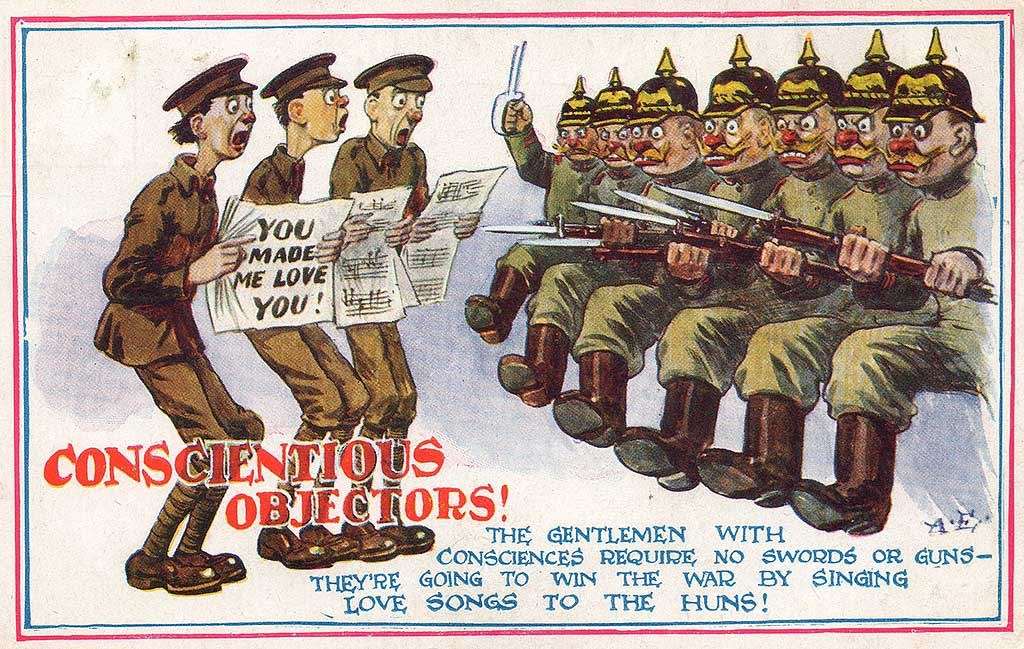
Image singing cos postcard 2 JPG
Tribunal work load.
Although the tribunals are best known for their often heavy-handed attitude towards cases of conscientious objection,
most of the tribunals' work dealt with domestic and business matters.
The tribunal system recorded applicants in two separate ways.
Men will have been noted as being either attested or non-attested men.
An ‘attested’ man was someone who had signalled their willingness to serve in the Army when called upon under the Derby Scheme of late 1915.
Derby Scheme
The Derby Scheme was the last effort to save the traditional voluntary recruitment, whereby men of military age not in the Army
(as identified by the National Register of 1915) were requested to attest their willingness to serve when called upon in the future.
Link to PDF on Tribunal Records and searchable records.
PDF link
https://www.nationalarchives.gov.uk/wp-content/uploads/2016/02/Military-Service-Tribunal-survey-Dec-2015-copy.pdf
Searchable link to some records.
https://www.nationalarchives.gov.uk/conscription-appeals/
About the records
The MH 47 series contains up to 11,000 case papers from the Middlesex Appeal Tribunal which, between 1916 and 1918, heard appeals
from men who had previously applied to a local tribunal for exemption from compulsory military service. The reasons provided by applicants
are varied, with applications made on moral grounds (conscientious objectors), on medical grounds (disability), on family grounds
(looking after dependents) and on economic grounds (preserving a business). The vast majority of cases relate to the impact of war on
a man’s family or their business interests, and the papers reveal some fascinating and tragic stories.
The case papers within MH 47 provide a unique insight into the tensions created between Government and society during the First World War,
which saw casualties and fatalities reach previously unimaginable levels.
The series is now fully searchable and available online in January 2014, following the completion of a digitisation project jointly funded by
the Friends of The National Archives and Federation of Family History Societies (FFHS).
Grounds of Appeal . A final appeal.
Grounds for Appeal: WWI Appeal Tribunal Papers
https://www.historypin.org/en/person/58889
link:
This link shows a person being not exempt in 1918 after a Central Tribunal Appeal hearing.
On 11 March 1918 an appeal was sent to the Central Tribunal in London. On 25 April 1918 the Central Tribunal gave their decision
that Claude Colleer Abbott was not to be exempt from military service.
This decision was final. An image copy of the record decision in inside the “histroypin” webpage.
Numbers of Appellants and Conscripts.
By 1916 over half a million persons had appealed, while the number of exemptions were about twice the number of conscripts.
Conscientious Objectors were in distinct groups.
The Absolutists.
These persons refused military service and any war related work whatsoever, men who were categorically opposed to the war.
These men were unwilling to perform any form of alternative non-combatant service that might aid the war effort.
Richmond Sixteen
The Richmond Sixteen were a group of "absolutist" British conscientious objectors during the First World War. Conscripted into the British Army in 1916, they refused to undertake even non-combatant military duties. Brought together at Richmond Castle, Yorkshire, most not knowing each other previously, they were (illegally) transported to France, where they were court-martialled and formally sentenced to be executed by firing squad, but this sentence was immediately commuted to ten years' penal servitude. They were released in April 1919, several months after the Armistice of 11 November 1918 and a few weeks before the signing of the Treaty of Versailles.
A considerable number of websites and documents are available on the Richmond Sixteen
The sixteen men (ex Wikipedia)
The group was made up of a Quaker, five International Bible Students (a group which has been known since 1931 as Jehovah's Witnesses), and members of the Methodists, Congregationalists, Churches of Christ, and Socialists. They were:
Norman Gaudie (1887–1955), centre forward of the reserve Sunderland Football Club, from East Boldon;
Alfred Matthew Martlew (1894–1917), a clerk at Rowntree's chocolate factory in York, originally from Gainsborough, Lincolnshire;
Herbert (Bert) George and William (Billy) Edwin Law, brothers from Darlington;
Alfred Myers, an ironstone miner from Carlin How;
John Hubert (Bert) Brocklesby, schoolteacher and Methodist lay preacher, from Conisbrough;
Charles Ernest Cryer, from Cleveland; Robert Armstrong Lown, from Ely;
and eight men from Leeds:
Clifford Cartwright, from the Churches of Christ;
John William Routledge;
Ernest Shillito Spencer (1897–1957), a Quaker clerk in a factory;
Clarence and Stafford Hall, brothers;
Charles Rowland Jackson;
Leonard Renton;
Charles Herbert Senior,
the latter five all International Bible Students, now known as Jehovah's Witnesses.
Non-combatant servicemen.
These persons were formed into non-combatant duty service units.
The vast majority of conscientious objectors (COs) were designated to fight or to join the Non-Combatant Corps (NCC),
specially created exclusively for COs. For those accepted as having genuine moral or religious objections to fighting,
being under military orders in the NCC was intended to make them support the war in non-fighting roles, such as transport or non-lethal stores.
Link to BBC short Summary
Summary:
BBC Bitesize for Schools on this subject
https://www.bbc.co.uk/bitesize/guides/zr64jxs/revision/1 1 of 6 short pages.
Domestic impact of war: society and culture
World War One had an impact on people’s everyday lives. Conscription was introduced and the role of women changed.
Scotland suffered a high number of casualties.
Summary page:
https://www.bbc.co.uk/bitesize/guides/zr64jxs/revision/3
Conscientious objectors. [COs]
Conscientious objectors were taken to a military tribunal. In 1916 approximately 14,000 appeared before tribunals.
These tribunals were like military courts and they listened to objectors’ reasons for their refusal to accept conscription.
Their arguments were usually rejected. However there were exceptions.
Extraordinary Case
One of the most extraordinary cases involved a mother, Elsie M. Cowie from Glasgow, who pleaded for her youngest son to serve at home.
The reason was that four of her sons had already gone to war and three had been killed in 1915 - two in the army and one in the navy.
The tribunal granted her son Frank Hamilton Cowie exemption on the grounds of hardship.
Numbers.
Around 7,000 conscientious objectors agreed to perform non-combat duties, often as stretcher-bearers in the front line.
However, more than 1,500 pacifists refused all military service.
These ‘absolutists’ opposed undertaking any work whatsoever that helped Britain's war effort.
Across the UK, almost 6,000 conscientious objectors were court martialled and sent to prison.
Conditions were harsh and at least 71 died because of the harsh treatment they received.
When the war ended, many conscientious objectors returned to civilian life to find that they weren't welcomed
by their families and employers refused to offer them jobs.
Memorials.
After a similar situation in World War II, where slightly better arrangements were in place, and after a long period of discussion and argument,
a war memorial to Conscientious Objectors was put up, and some museums list the local names.
400 names from Richmond castle.
The names of 400 conscientious objectors who passed through Richmond Castle in North Yorkshire during the First World War
wiere revealed for the first time in 2019. The 400 names are included in a new museum at the castle which opened on Saturday 20 July 2019.
https://www.english-heritage.org.uk/about-us/search-news/conscientious-objectors-named/
Memorial photograph
The Conscientious Objectors' Commemorative Stone is on the north side of Tavistock Square, Bloomsbury, in the London Borough of Camden. In 1994 a stone commemorating "men and women conscientious objectors all over the world and in every age" by Hugh Court was unveiled in Tavistock Square.
Link:
https://en.wikipedia.org/wiki/Conscientious_Objectors_Commemorative_Stone
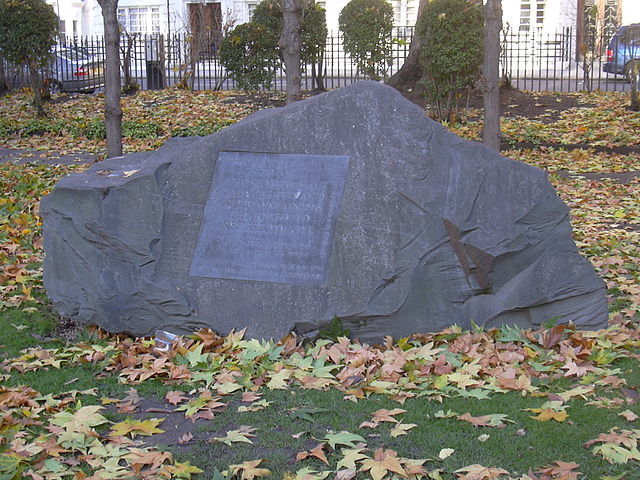
Memorial to Conscientious Objectors public domain Vernon 640px DSCN1999TavistockSqConcObj
Image of memorial in the public domain is by Vernon White, Cornwall, United Kingdom
By Vernon39 - Own work, Public Domain, https://commons.wikimedia.org/w/index.php?curid=3180416
Thanks
The group and its visitors warmly thanked Brian Joyce for his talk about the ‘minority’ of Conscientious Objectors.
Some further study links are shown below.
https://archives.wigan.gov.uk/archive/world-war-records/leigh-tribunal?
https://www.theguardian.com/world/2019/jul/19/conscientious-objectors-of-first-world-war-their-untold-tales
https://en.wikipedia.org/wiki/Richmond_Sixteen
Imperial War museum
Tribunals text https;//www.iwm.org.uk
This has stories of the experiences of COs and is most highly recommended to be read for the personal insights it gives.
IMPERIAL WAR MUSEUM site
https://www.iwm.org.uk/history/voices-of-the-first-world-war-conscientious-objection
English Heritage project text
link
https://www.english-heritage.org.uk/visit/places/richmond-castle/history-and-stories/attitudes-to-cos/
This is a good summary of attitudes and changing attitudes to Conscientious Objectors with illustrations.
How to look for records of... Conscientious objectors
https://www.nationalarchives.gov.uk/help-with-your-research/research-guides/conscientious-objectors/
WW1: The conscientious objectors who refused to fight
By Holly Wallis BBC News Published 15 May 2014
https://www.bbc.co.uk/news/uk-27404266

